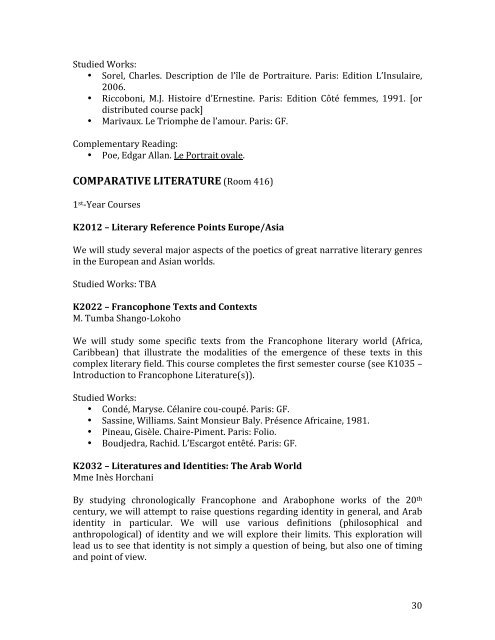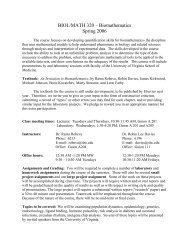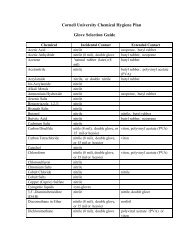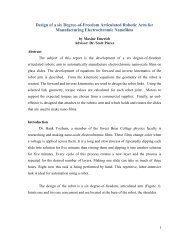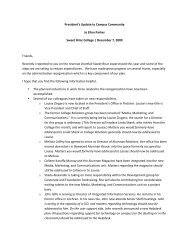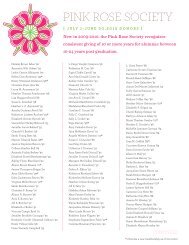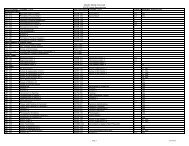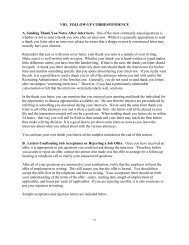Brochure - English translations of course offerings
Brochure - English translations of course offerings
Brochure - English translations of course offerings
You also want an ePaper? Increase the reach of your titles
YUMPU automatically turns print PDFs into web optimized ePapers that Google loves.
Studied Works: <br />
• Sorel, Charles. Description de l’île de Portraiture. Paris: Edition L’Insulaire, <br />
2006. <br />
• Riccoboni, M.J. Histoire d’Ernestine. Paris: Edition Côté femmes, 1991. [or <br />
distributed <strong>course</strong> pack] <br />
• Marivaux. Le Triomphe de l’amour. Paris: GF. <br />
Complementary Reading: <br />
• Poe, Edgar Allan. Le Portrait ovale. <br />
COMPARATIVE LITERATURE (Room 416) <br />
1 st -‐Year Courses <br />
K2012 – Literary Reference Points Europe/Asia <br />
We will study several major aspects <strong>of</strong> the poetics <strong>of</strong> great narrative literary genres <br />
in the European and Asian worlds. <br />
Studied Works: TBA <br />
K2022 – Francophone Texts and Contexts <br />
M. Tumba Shango-‐Lokoho <br />
We will study some specific texts from the Francophone literary world (Africa, <br />
Caribbean) that illustrate the modalities <strong>of</strong> the emergence <strong>of</strong> these texts in this <br />
complex literary field. This <strong>course</strong> completes the first semester <strong>course</strong> (see K1035 – <br />
Introduction to Francophone Literature(s)). <br />
Studied Works: <br />
• Condé, Maryse. Célanire cou-‐coupé. Paris: GF. <br />
• Sassine, Williams. Saint Monsieur Baly. Présence Africaine, 1981. <br />
• Pineau, Gisèle. Chaire-‐Piment. Paris: Folio. <br />
• Boudjedra, Rachid. L’Escargot entêté. Paris: GF. <br />
K2032 – Literatures and Identities: The Arab World <br />
Mme Inès Horchani <br />
By studying chronologically Francophone and Arabophone works <strong>of</strong> the 20 th <br />
century, we will attempt to raise questions regarding identity in general, and Arab <br />
identity in particular. We will use various definitions (philosophical and <br />
anthropological) <strong>of</strong> identity and we will explore their limits. This exploration will <br />
lead us to see that identity is not simply a question <strong>of</strong> being, but also one <strong>of</strong> timing <br />
and point <strong>of</strong> view. <br />
<br />
30


